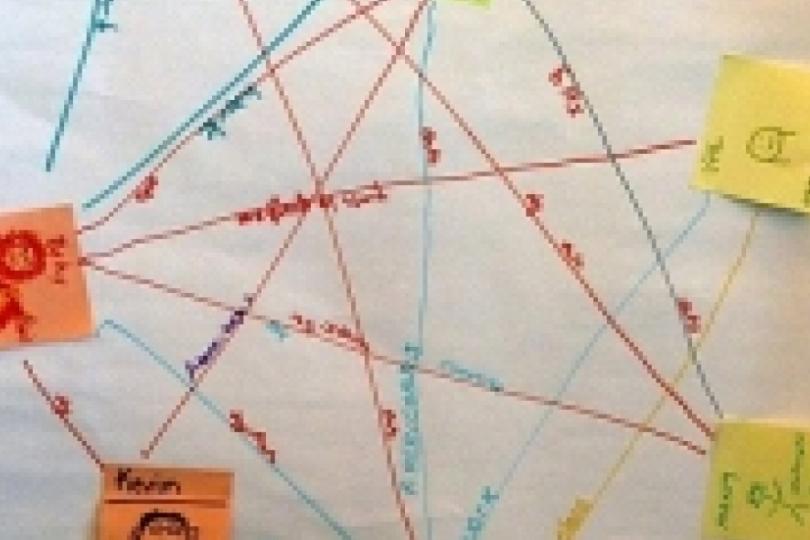After four hours of back-to-back communications planning sessions with individual artists and small ensembles, I was expecting to be wiped out, but instead I found myself oddly exhilarated.
An unexpected feeling perhaps, but what isn’ t exhilarating about hearing artists talk passionately about their work and the reasons they are driven to create, perform, and produce? It’ s pretty fun stuff.
From the artist’s perspective, however mention “strategic planning” or “communications planning” and “ exhilarating” is hardly the word that comes to mind for most of them. In fact, these words often bring conversation to a grinding halt; eyes began to dart or roll in response. The phrases admittedly sound corporate, canned, and, like many overused words, devoid of meaning.
Yet when we push past surface impressions and consider what planning can mean for everybody—not just big organizations—artists perhaps stand the most to gain and have the most to contribute in this arena. Creativity, the modus operandi of artists, is one of the essential ingredients in good planning. And in turn, good planning, as one of our clients recently remarked, sets you free! That alone should inspire reconsideration of the “ p” word.
What Artists Bring to Planning
Good planning is rooted in the ability to listen and see. And observing, analyzing and interpreting the world are skills that often come easily to artists. Artists tend to think outside the box, fearlessly pursue the new, nimbly adapt to changing environments, and excel in seeking and stretching resources. Artists want to move, to act, to do; they are rarely content staying in one place. They are, therefore, by nature wide open to the process of planning.
Artists also know themselves. They can usually define their distinctive qualities and what they have to offer with little trouble, and they almost always know what they want. Therefore, describing mission, vision and goals (arduous tasks for many an organization) seems remarkably straightforward and natural for artists.
What’s in it for Artists?
Planning can be the ultimate expression of creativity. For example, a communications plan sets forth, with clarity and thoughtfulness, how an artist seeks to be viewed, how he or she wants to share artistic work and with whom. It forces decision making so resources are used more wisely. Putting all of that on paper is an act of creativity.
The world is a noisy place. It can take a great deal of money to be heard. Given that abundant financial resources are rare for most artists, therefore, what’s the option? One solution lies in establishing clarity and consistency. In a rapidly changing and busy world, it is critical to clearly and succinctly communicate distinctive messages with intended audiences, using methods that constantly adapt to the needs and preferences of these audiences. Most of us need to see or hear something multiple times for it to stick.
Therefore, if an artist’s message is always in flux or lacking in clarity, gaining attention or recognition is that much more difficult.
Planning also encourages artists to think about the other side of the equation: the audience. Thoughtful planning requires a focus on who is or may be interested in a particular artist’s work and why, and then on how to best reach these people. Again, creativity in this realm is enormously valuable.
What Good Planning Looks Like
First and foremost, planning should feel like creating art. If it doesn’t, something is wrong. It’s a time to set aside preconceptions, let loose, think expansively, gather ideas, and then set a course of action.
Planning begins with an artist’s vision. Vision is a tricky thing. It describes, in aspirational terms, what success looks like. It’s the bridge between purpose (mission) and specific goals, and it is also the foundation for communicating what makes an artist distinctive and what his/her impact on this world is likely to be.
As mentioned earlier, a hugely beneficial step in planning is to think through target audiences. Too often, without meaningful consideration, we talk about the tools—be it websites or video trailers or guerilla marketing—before we figure out whom it is we really want to reach. “Everybody” is not the audience. Taking the time to consider and prioritize can mean the difference between success and failure.
The heart of a good communications plan—and the place where creativity can truly take flight—is in the language and visuals that represent an artist, ensemble or company. It begins with a positioning statement that tells specific audiences who you are and what they can expect in terms of experience and impact. Developing a few key messages helps artists focus on what is most important, and then attaching proof points—concrete facts, testimonials, and outside recognition—builds a solid foundation from which news releases, marketing and website copy, and grant proposals can be written. Another benefit to this part of planning: pulling together this information, as one client recently told us, is a huge confidence builder!
Now, if strategic and communications planning are show-stopping words for artists, an equally distasteful word may be “branding.” Yet in planning, it would be unwise to ignore this foundational issue. But branding is not just about a logo or a color palette.
Rather, branding is based upon trust and authenticity. Artists develop lasting connections with audiences and donors by authentically representing themselves with compelling and unique expressions of their work that are relevant to their patrons’ needs and desires. Those expressions are both written and visual, but it’s vital to do the planning before embarking upon design and production of materials. Words and visuals that come from a place of authenticity resonate far more loudly and widely than stunts or “buzz building.”
In other words, it needs to be real, and artists seem to have a unique appreciation for and understanding of this concept.
Last, but certainly not least in importance, a major benefit to planning is the consideration of tools and resources, both financial and human. Good planning focuses on choosing the best methods to distribute a message. You can’t do everything, especially if you are a one-person enterprise. Carefully choosing and using a tool well always trumps the “let’ s try everything” approach. This part of planning helps an artist stay on course and use time and limited funds wisely.
There is No Perfect Way
Rarely do any of us have the time to plan yet without doing so we are often afloat and unclear. Perhaps approaching planning like the creation of a new play, the writing of a book, or the compilation of an exhibit would make it more understandable and interesting for many of us in the artistic world. There is no perfect method or time or format. What is important is that a plan is developed with thought, creativity and intent, just as artists create their work.
Kathy Graves
Kathy Graves is a partner in Parenteau Graves Communications, a firm specializing in strategic planning, marketing and public relations, and Web site planning and design for nonprofit organizations. She was the arts writer for Southwest Journal for seven years, during which time she received the Minnesota Newspaper Award for feature writing. She also is the co-author and editor of Indians in Minnesota, published by the University of Minnesota Press in 2007, and a community faculty writing instructor at Metro State University.





